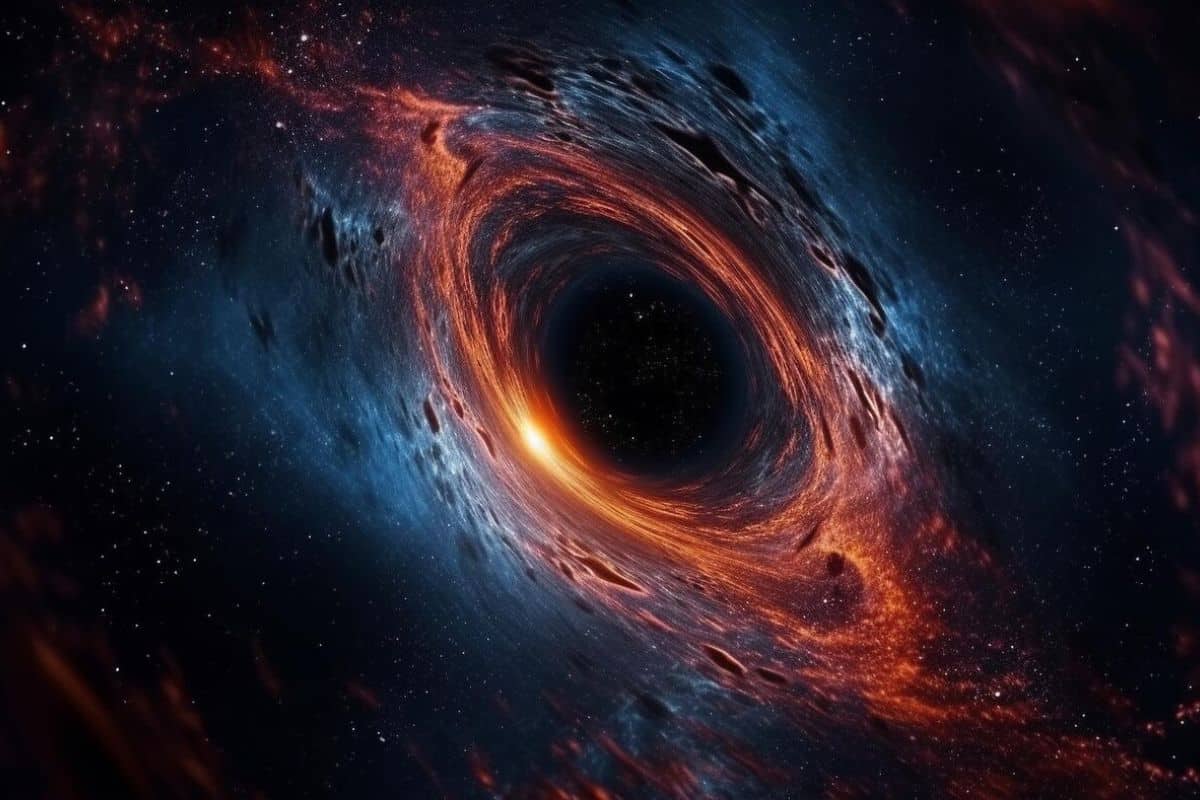
Astronomers have announced the discovery of 300 extremely rare black holes, potentially unraveling one of the most significant enigmas in astrophysics—how supermassive black holes develop and evolve over time.
Utilizing the Dark Energy Spectroscopic Instrument (DESI), researchers conducted a survey of 410,000 galaxies, uncovering the largest set of intermediate-mass black hole candidates ever documented. This groundbreaking study, featured in the Astrophysical Journal, may provide fresh perspectives on the growth of black holes and their influence on galaxy formation.
Bridging the Gap in Black Hole Evolution
For years, scientists have grappled with the question of how black holes expand from relatively small entities to supermassive giants that can be billions of times the mass of the Sun. Most known black holes are classified into two distinct groups: stellar-mass black holes (which range from a few to several dozen solar masses) and supermassive black holes (ranging from millions to billions of solar masses).
Despite extensive searching, observational evidence for intermediate-mass black holes (IMBHs)—which range from 100 to 100,000 solar masses—has been scarce. These black holes could represent a crucial evolutionary link between smaller and larger counterparts. While some candidates had been noted previously, none had been conclusively confirmed until this study.
Methodology Behind the Discovery
The significant breakthrough originated from the Dark Energy Spectroscopic Instrument (DESI) installed on the Nicholas U. Mayall 4-meter Telescope in Arizona. Originally designed to investigate the universe’s expansion through the mapping of millions of galaxies, DESI’s data also proved essential for the hunt for black holes.
By examining the light emitted from galaxies, scientists discovered over 2,500 dwarf galaxies exhibiting active galactic nuclei (AGN)—intense emissions generated by matter falling into black holes. Out of these, 300 black hole candidates were identified as IMBHs, tripling the number of known intermediate-mass black hole candidates and establishing the largest dataset of its kind.
The Significance of Active Galactic Nuclei
When a black hole actively consumes nearby material, it emits a tremendous amount of energy, leading to the formation of an active galactic nucleus (AGN). These vibrant emissions act as indicators, enabling astronomers to uncover otherwise hidden black holes.
Lead researcher Ragadeepika Pucha from the University of Utah stressed the importance of AGNs in spotting the elusive IMBHs. “When a black hole at the center of a galaxy feeds, it releases a massive amount of energy into its surroundings, transforming into what we call an active galactic nucleus,” Pucha noted in a statement. “This explosive activity acts as a beacon, guiding us to uncover hidden black holes in these smaller galaxies.”
What Sets These Black Holes Apart?
While the discovery of 300 IMBH candidates is monumental, it also raises new questions. IMBHs were anticipated to be frequently found in dwarf galaxies, yet only 70 of the newly identified intermediate black holes were located in these types of galaxies. This unexpected finding challenges previous beliefs and implies that IMBHs might be forming in different settings than initially assumed.
This revelation also points toward multiple mechanisms for black hole formation. Scientists once believed that supermassive black holes primarily grew from the merger of smaller black holes over extended periods. However, the latest findings propose that other processes, such as the direct collapse of massive gas clouds, might also contribute to the formation of these cosmic giants.
Do Black Holes Influence Galaxy Evolution?
Black holes significantly shape their host galaxies. Their powerful gravitational influence affects the movement of stars and gas, while their energy output can regulate star formation by heating the surrounding material. The presence of IMBHs in unexpected areas suggests that their role in galaxy evolution may be more intricate than previously recognized.
Astronomers are now keen to explore whether these newly identified IMBHs follow a consistent growth pattern or if their development is influenced by environmental conditions.
The identification of 300 intermediate-mass black holes marks a pivotal moment in astrophysics. These extraordinary entities could unlock new knowledge about the formation and evolution of supermassive black holes. As DESI continues its mission, astronomers eagerly await further discoveries in the enigmatic realm of black holes.









